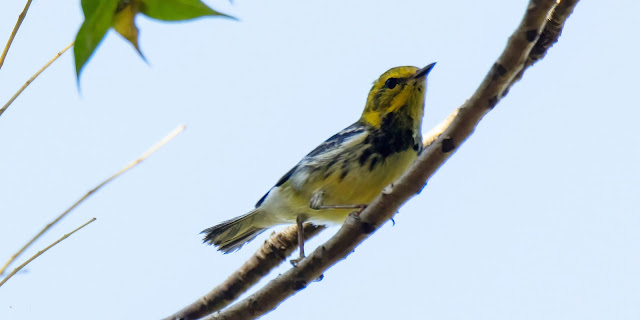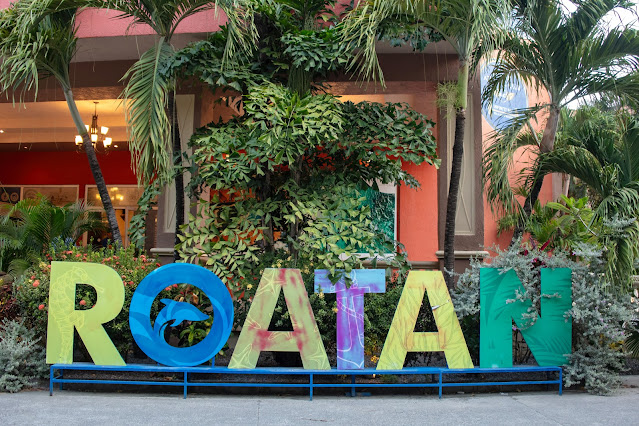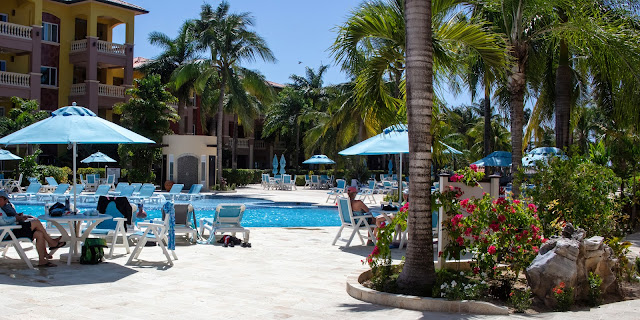 |
| Becca, Caty and Aaron in Maui |
 |
| The hardest part was getting back on the boat; Photos: Becca Stevens |
So they didn’t get too much time in the water, especially since Caty left a day earlier than Becca and Aaron, so they got in one more day.
This had been bothering Becca because she wanted Caty to get more diving time. Then, Aaron’s brother, Luke, got certified in early 2025 and Aaron’s mother, Kris, got her first passport and wanted an international trip.
So, Becca hatched a plan, where we (Becca, Aaron, Caty, Luke, Kris and me) would all go somewhere for a brief dive-focused visit.
I was invited to be there with Kris so they wouldn’t leave her alone for multiple diving trips. Great plan!
Becca decided upon the Infinity Bay Spa & Beach Resort in Roatán, Honduras, because she had been before and was impressed with both the diving and the easy-access (read: sandy bottom) snorkeling.
 |
| Infinity Bay Spa & Beach Resort |
Great! A new country. Some relaxing and some snorkeling.
I decided (because I always do) that I also wanted to go birding. I invited Kris to join me, but she’s not a morning person and birding is definitely a morning sport.
 |
| Brown-crested Flycatcher |
So, our time was spent lazing by the pool, snorkeling (most of us), diving (the “kids”) and birding (me). I won’t bore you with a chronological listing of repetitive activities. Instead, I’ll just over the high points.
But, first …
About Roatán
An island in the Caribbean, about 40 miles off the northern coast, Roatán is the largest of the Bay Islands of Honduras.
 |
| Roatán: Google Maps |
The island consists of two municipalities: José Santos Guardiola in the east and Roatán, including the Cayos Cochinos, in the west.
Sitting atop an exposed ancient coral reef, Roatán’s highest point is 890 feet above sea level.
 |
| Offshore coral reefs |
The easternmost quarter of the island is separated by a 50-foot-wide channel through the mangrove forest. This section is called Helene, or Santa Elena in Spanish. Satellite islands at the eastern end are Morat, Barbareta and Pigeon Cay.
Most of the infrastructure is on the western side. The most populous town is Coxen Hole, capital of Roatán municipality, located in the southwest. West of Coxen Hole are the settlements of Gravel Bay, Flowers Bay and Keyhole Bay on the south coast, and Sandy Bay, West End and West Bay on the north coast.
 |
| West Bay (that's our resort of the left) |
To the east of Coxen Hole are several cays, including Jesse Arch Cay, Sarah Cay and Second Cay. Further to the east are the settlements of Mount Pleasant, French Harbour, French Cay, First Bight, Parrot Tree, Jonesville and Oakridge on the south coast, and Punta Gorda on the north coast.
None of that matters because, except for my birding trip that went to Roatán, Dixon Cove, Bosques de Brass Hill, Brick Bay, the municipal dump (birds!) and eastern Sandy Bay beach, we never left our resort except to walk a short distance down the beach to snorkel or eat at other West Bay resorts.
The indigenous people of the Bay Islands are believed to have been related to one or more of the tribes that lived on the mainland: Paya, Maya, Lenca and Tolupan. Christopher Columbus visited the neighboring island of Guanaja on his fourth voyage (1502-1504). Soon after, the Spanish began trading in the islands for slave labor. The locals were devastated by the diseases brought by the Spanish, especially smallpox and measles.
Throughout the European colonial era, the Bay of Honduras attracted individual settlers, pirates, traders and military forces, many using the islands to rest and re-supply. Britain and Spain influenced most economic and political developments. On several occasions, the islands were occupied; the English occupied on and off between 1550 and 1700.
During this time, English, French and Dutch pirates established settlements on the mostly unprotected islands. They frequently raided the Spanish treasure ships, cargo vessels carrying gold and silver from the New World to Spain.
During the War of the Austrian Succession, a British Army detachment garrisoned the island from 1742 to 1749.
 |
| Honduran pirates: Paya Magazine |
The majority of the Garifuna migrated to Trujillo on mainland Honduras, but a portion remained to found the community of Punta Gorda on the northern coast of Roatán. The Garifuna, whose ancestry includes Arawak and Maroons, remained in Punta Gorda, becoming the Bay Island's first permanent post-Columbian settlers. They also migrated from there to parts of the northern coast of Central America, becoming the foundation of the modern-day Garífuna culture in Honduras, Belize and Guatemala.
The majority permanent population of Roatán originated from the Cayman Islands. They arrived shortly after the 1833 Slavery Abolition Act disrupted the economic structure of the Caymans. Former slaveholders were among the first to settle throughout primarily western Roatán. During the late 1830s and 1840s, former slaves also migrated from the Caymans, in larger number than planters.
For a brief period in the 1850s, Britain declared the Bay Islands its colony. Within a decade, the Crown ceded the territory formally back to Honduras.
In the 20th century, there was continued population growth resulting in increased economic changes and environmental challenges. A population boom began with an influx of Spanish-speaking Mestizo migrants from the Honduran mainland. Since the late 20th century, they tripled the previous resident population. Mestizo migrants settled primarily in the urban areas of Coxen Hole and Barrio Los Fuertes (near French Harbour).
Even the mainlander influx was dwarfed in number and economic effects by the overwhelming tourist presence in the 21st century.
 |
| Tourists are attracted to the beautiful ocean |
Numerous American, Canadian, British, New Zealander, Australian and South African settlers and entrepreneurs immigrated and became engaged chiefly in the fishing industry.
Later, the diving industry provided the foundation for attracting the tourist trade.
 |
| Many dive sites |
In 1998, Roatán suffered some damage from Hurricane Mitch, temporarily paralyzing most commercial activity. The storm also broke up the popular dive-wrecks Aguila and Odyssey.
Although mainland Honduras is Spanish-speaking, English is the first language of native islanders, regardless of race, with Spanish spoken second. A steady influx of mainland Hondurans migrating to the islands in the late twentieth century increased the use of Spanish, but tourism keeps English as the dominant language among all native island peoples.
The English spoken by the Roatán Islanders differs from the English spoken in other regions of the rest of the Caribbean, with a different accent and usage of different word.
Port of Roatán in Coxen Hole is managed by Royal Caribbean Group and is the port of call for Royal Caribbean, Celebrity, MSC, Norwegian, Seven Seas, Virgin Voyage and others. It has two berths and allows offshore tendering.
The Mahogany Bay Cruise Center, about three miles away in Dixon Cove, is owned and managed by Carnival. It can accommodate two cruise ships concurrently and does not allow tendering offshore. Carnival, Princess, Holland America and other subsidiaries of Carnival call on the Mahogany Bay port.
There were cruise ships in port all but one day of our stay, but we didn’t notice a difference. That’s because we spent all our time in the safe enclave of our resort.
 |
| Plus we walked to nearby resorts to eat |
We had originally planned to take a water taxi to the West End, but never went because the dive schedule meant late lunches and early bedtimes. Plus, some fellow guests told us town was a bit dicey after dark.
 |
| That's OK; we were fine where we were; Photo: Caty Stevens |
Our Stay
We flew into Roatán on the once-a-day American flight from Miami. Caty and I took a red-eye from Denver to Miami and spent our five-hour layover mainly in the Admiral’s Club; the Oklahoma contingent flew in from Dallas the same day as the Roatán flight.
Apparently, we lucked out with timing. Some fellow passengers were arriving in Roatán a day late because weather delayed their connections to Miami. Then, on the day we left, we found out that the American plane from a few days after our arrival had mechanical problems and some people ended up having to extend their Roatán stay by 24 and even 48 hours.
The resort picked us up and took us to our hotel. Located on the white sands of West Bay Beach, Infinity Bay Spa & Beach Resort has what they call “spacious beachfront villas.” I think I would call them HUMONGOUS villas. Caty and I had a two-bedroom, two-bath with a living room, full kitchen and a balcony.
 |
| Nice rooms even though the decor was a bit "tropical meh" |
Becca and the McDougals stayed in a three-bedroom, three-bath unit that must have been at least 1,800-square feet. Between the two dining tables, counter and tables on multiple balconies, I believe they could have served a sit-down dinner for at least 23 people! So, nice, comfy accommodations. If they had washers and dryers, they would be perfect.
The area in the middle of the 147-unit resort has multiple lovely swimming pools that were never crowded, a tiki bar and an al fresco restaurant.
 |
| The pools are the focal point |
Breakfast, which was included in our package, was served in the main building that overlooks the pools. The breakfast was abundant and good, especially the excellent pineapple. We had lots and lots of pineapple and it was tasty!
 |
| Breakfast was on the second level; Right photo: booking.com |
The food was OK, with some hits and some misses. There is also a nicer restaurant, but we never ate there. We also never used the spa. Too busy diving, snorkeling and lazing.
When I got up early to go for a walk up the road outside the resort to look for Agoutis (based on my birding guide’s advice), I encountered one just outside my room. Later, I saw another Roatán Agouti (a specific endemic subspecies) just down the path.
 |
| The two Roatán Agoutis I saw |
I also saw some cool lizards ...
 |
| Brown Anole and female Blue-headed Anole |
Infinity Bay also hosts a (very good according to our divers) on-site PADI-certified dive center and a dock on the resort’s beach where the dive ships pick-up and drop off passengers. Talk about convenient!
The weather in Roatán, as one would expect, was hot and humid.
We had sun and no rain. But, we did have wind. Wind that got much, much stronger as the day passed. Since most of the dives were in the morning, it didn’t cause any problems. But, it did make outside eating a bit annoying and almost every restaurant is outdoors.
One night we ordered room service just so we could eat without chasing napkins, inhaling sand and pushing hair out of our faces.
Birding
I did my half-day birding excursion the first morning after our arrival. I went with Joel Amaya of Roatan Wildlife, who was recommended by a Facebook birding group. He was a pleasant guide and we had a lovely morning.
I did feel that Roatán didn’t have a lot to offer in terms of lifers, primarily because many of the birds there are also in Costa Rica, where I birded in 2022. In a half-day of birding, I got four lifers, the last two of which I could get in the US …
 |
| White-crowned Pigeon |
 |
| Yucatan Vireo |
 |
| Black-throated Green Warbler (migrating through) |
 |
| Magnolia Warbler (migrating through) |
While not a new bird, the Velasquez's Golden-fronted Woodpeckers we saw several places are a distinct subspecies found on Roatán.
A highlight was a really nice look at a Northern Potoo. I had seen this funky bird in Mexico in 2024, but at full dark. We saw that one with its huge eyes wide open and watched it fly, but the photos were rough.
The one in Roatán was sleeping (they are nocturnal), but in the open in bright sunlight.
 |
| Mangrove Vireos |
 |
| Great-tailed Grackles |
 |
| Northern Waterthrushes |
 | ||
We saw Green-breasted Mangos, but all I captured was an empty nest
|
 |
| A Black-necked Stilt on the nastiest beach I've ever seen (not a tourist area) |
 |
| Blue-gray Tanagers |
 |
| A Spotted Sandpiper |
 |
| The Magnificent Frigatebirds (right) were far, but I had great photos from Costa Rica (left) |
 |
| The Royal Terns were also far away |
Additional migrating birds we saw were …
 |
| An American Redstart |
I didn't get pictures of the Tennessee Warbler, Yellow Warbler or multiple Turkey Vultures.
Joel wanted to show me a Yellow-naped Parrot that has an easily viewed nest.
 |
| We found the nest, but the bird was not there |
I did see some in Costa Rica, but it would have been nice if one had been sitting at the nest entrance like they usually are.
 |
| This is the bird we were looking for |
We also saw several Canivet's Emerald Hummingbirds, a variety I had seen in Costa Rica and had trouble getting good photos. Same here. But, later I walked over to the entrance to the Kimpton Grand Roatan Resort and Spa next door to our hotel and photographed some flying around the fountains.
 |
| A good score (and I was looking for Agoutis) |
Our birding trip wasn’t exclusively birds, we also saw ...
 |
| Beautiful butterflies, including this Red Postman |
 |
| Blue-headed Anoles (male and female) |
 |
| Common Basilisks |
 |
| Huge Termite nests in the trees (Joel said the termites do not harm the trees) |
Infinity Bay had boasted that you can see Scarlet Macaws at the front entrance and I did see six flying rapidly over the first morning, but I never saw them land anywhere. I had seen lots in Costa Rica, so no great loss. I would have like for my travel mates to see one, though.
In my next post. I'll talk about what we saw under the water!
Trip dates: April 3-7, 2025



























No comments:
Post a Comment